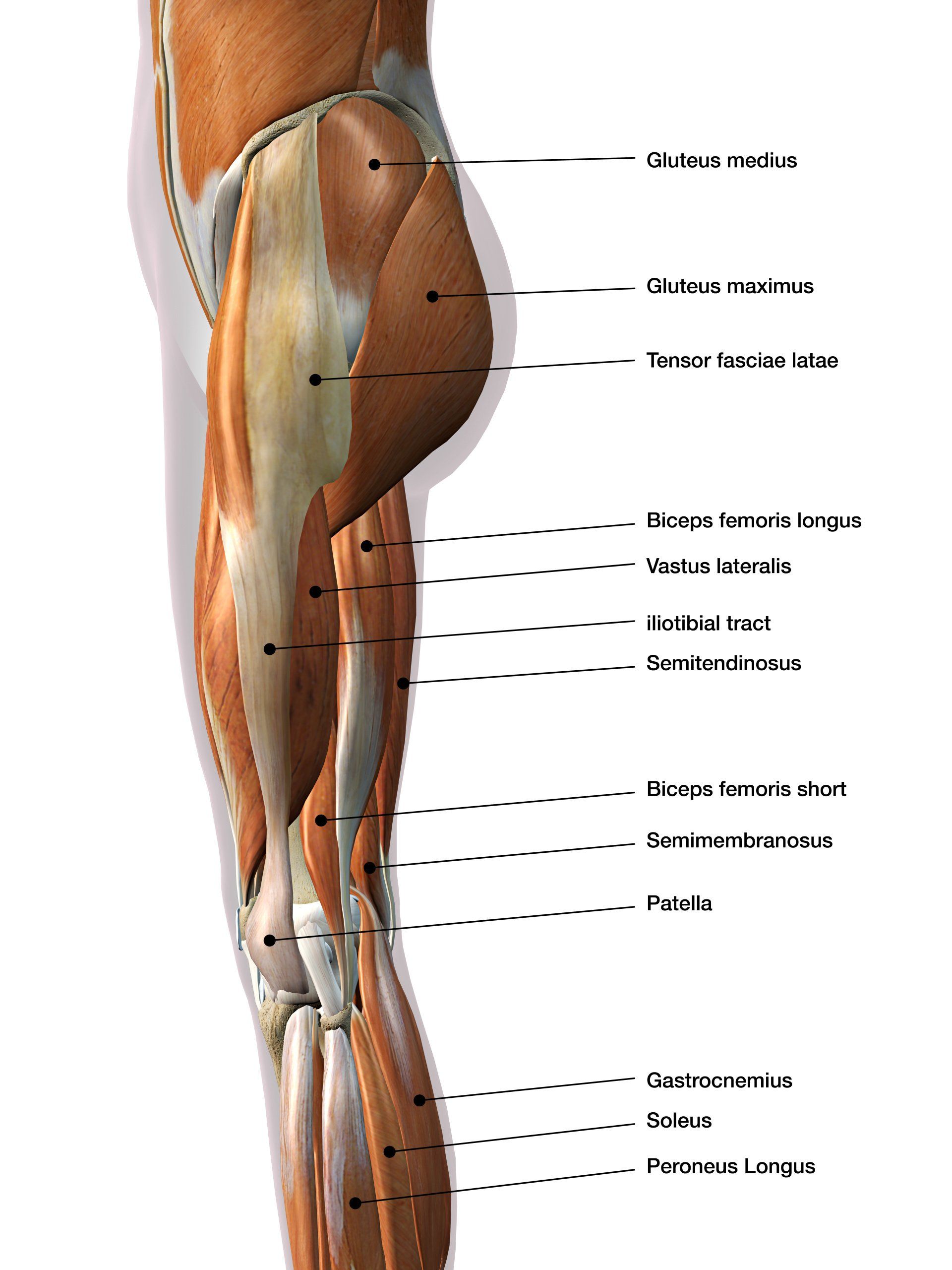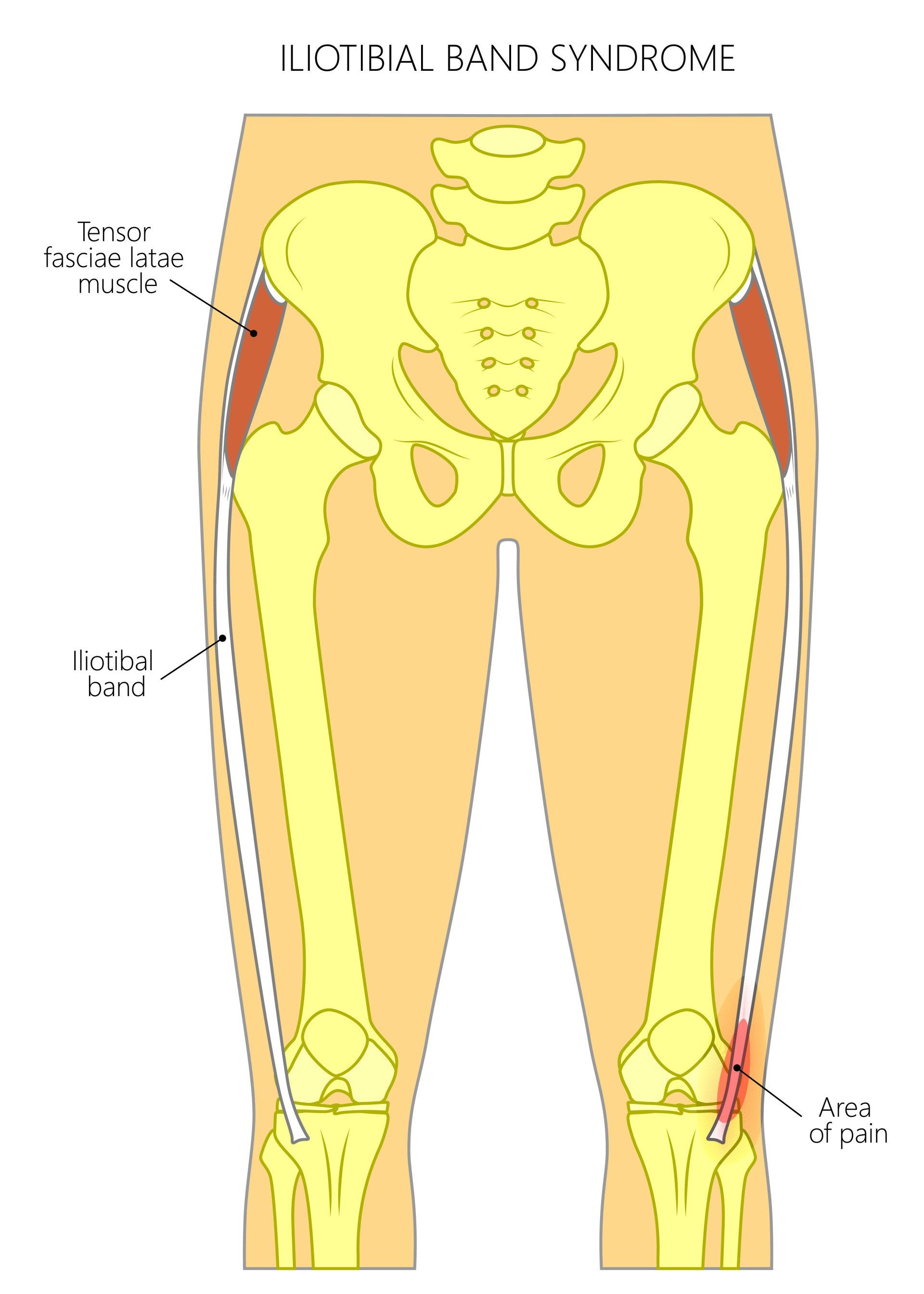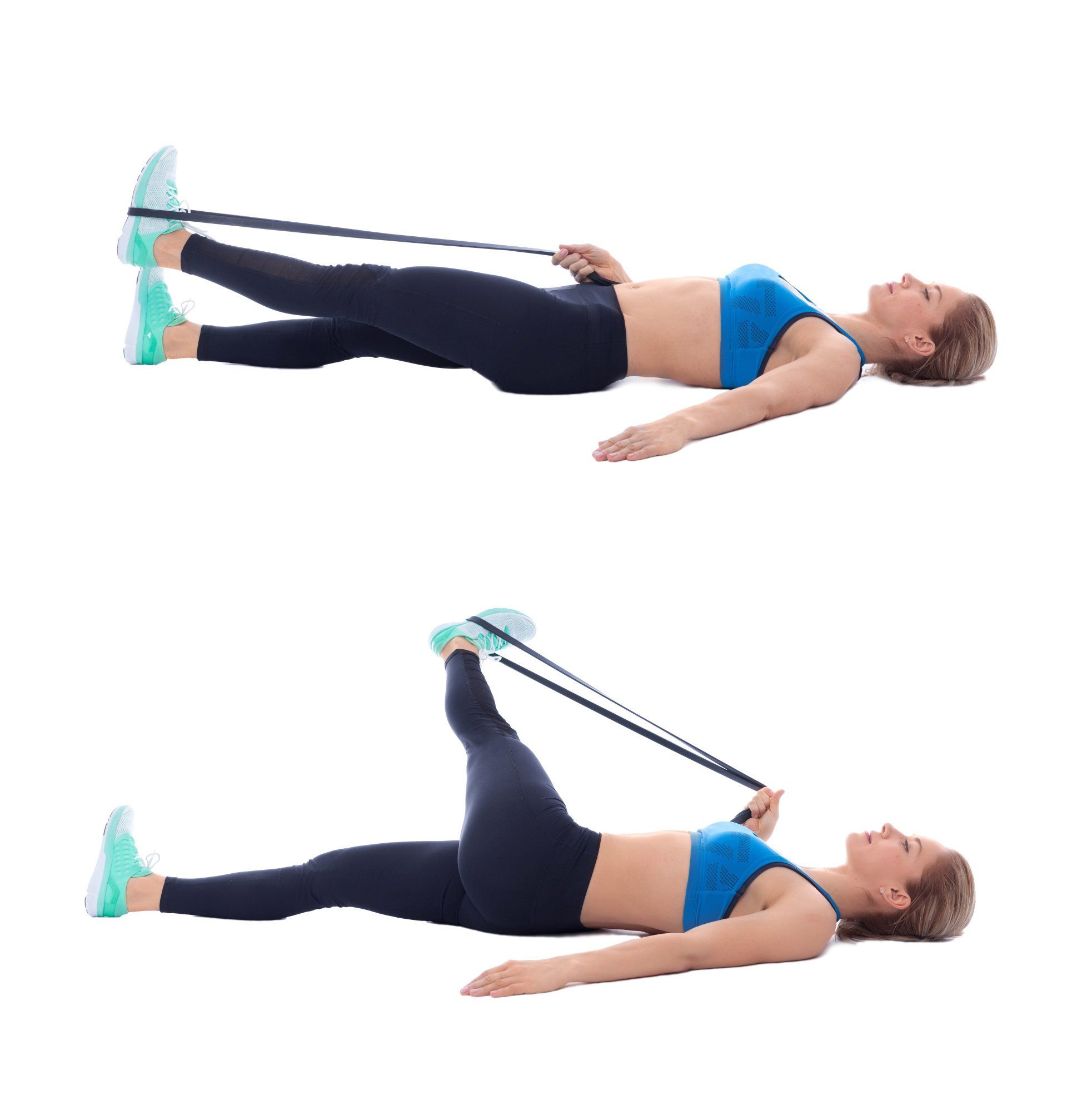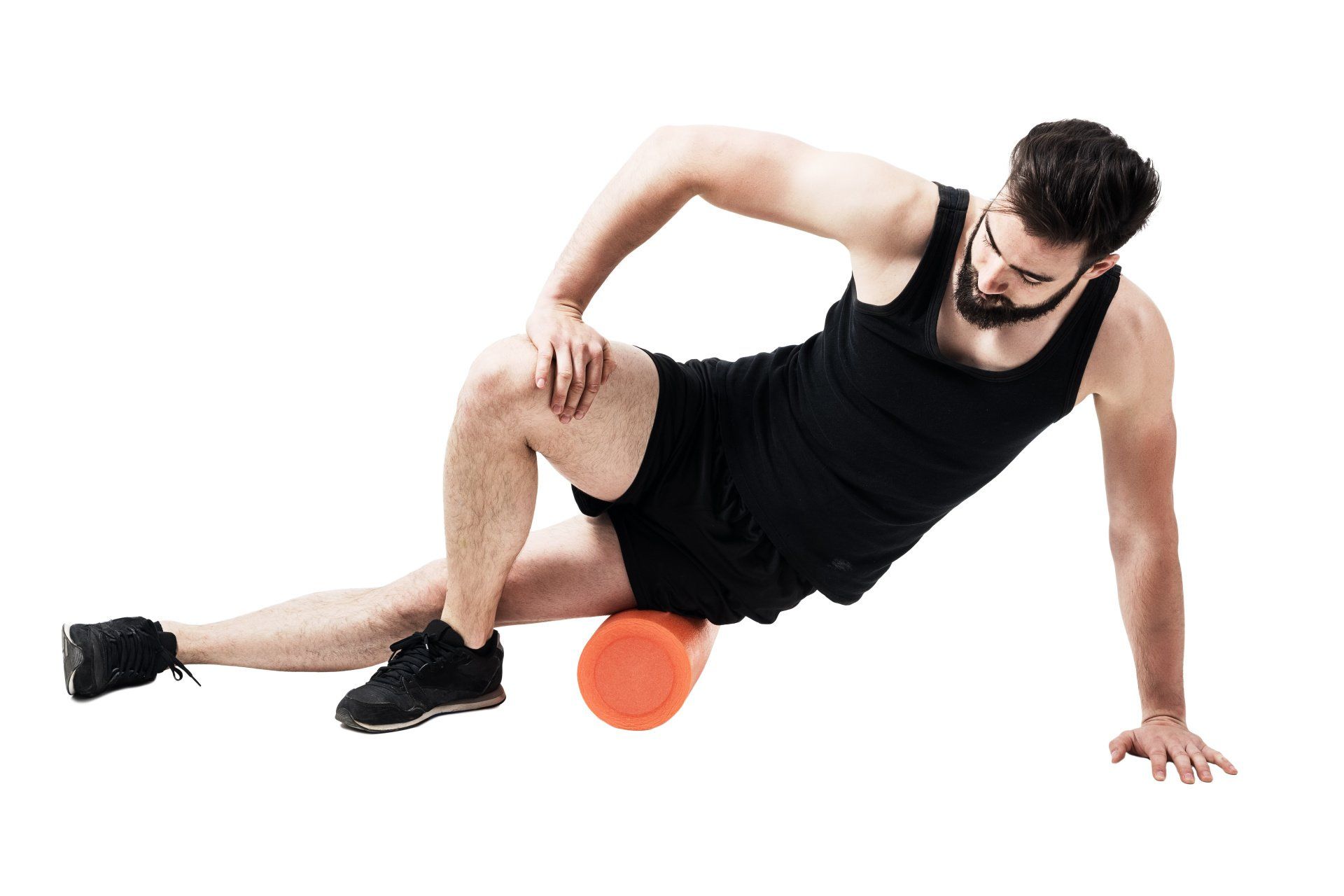Iliotibial Band Syndrome
Overview of iliotibial band syndrome
- Iliotibial band syndrome is a common non-traumatic overuse knee injury
- It presents with pain on the lateral (outer) aspect of the knee around the lateral femoral epicondyle
What is the anatomy of the iliotibial band?
- Iliotibial band (ITB) is a fascia (sheet of fibrous tissue) on the lateral (outer) aspect of the thigh and knee
- ITB is the largest piece of fascia in the human body
- It is a continuation of a muscle on the side of the hip called the tensor fascia lata
- Some fibres from gluteus maximus (largest buttock muscle) also insert into the ITB:
- It functions to extend the hip (foot going backwards from the body)
- ITB inserts into Gerdy’s tubercle:
- Bony prominence on the anterolateral (front/outer) aspect of the tibia just below the joint line
What is the function of the iliotibial band?
- ITB crosses the hip and knee and so is constantly used when walking and running
- Helps stabilise the knee in extension and partial flexion
- It aids in conserving energy when standing straight by maintaining knee extension with minimal muscle contraction
- As the knee flexes (bends) and extends (straightens out) the ITB moves over a bony prominence on the outer aspect of the knee called lateral epicondyle:
- ITB moves anterior (in front) of it with the knee extended
- ITB moves posterior (behind) to it with the knee flexed
- Due to this movement of the ITB, anterior and posterior to centre of rotation of the knee ITB functions as a:
- knee extensor when the knee is in less than 30 degrees of flexion
- knee flexor when the knee is in more than 30 degrees of flexion
- Recent research has shown ITB to be key structure for locomotion by storing a lot of energy much like a spring:
- This means that it helps conserve energy whilst walking and even more so whilst running
- As the knee flexes and extends one part of the ITB is stretched thus storing energy which is delivered as the knee moves in the opposite direction
What is the cause of iliotibial band syndrome (ITBS)
- The exact cause of ITBS is controversial and likely due to numerous factors
- The commonest cause given is that of repetitive friction:
- In exercises that involve a lot of repetitive knee flexion and extension, the ITB rubs over the prominent lateral femoral epicondyle causing inflammation of the ITB
- Another cause is thought to be inflammation of a fat pad that is richly innervated and is located deep to the ITB
- A third explanation is chronic inflammation of a the ITB bursa located between it and the lateral femoral epicondyle
Who is at likely to get iliotibial band syndrome?
- ITBS is the most common cause of lateral knee pain in runners and cyclists
- Other at-risk sports are tennis, soccer, skiing and weight lifting
- Slightly more common in women
- Very rare in the inactive population
What are the risk factors for iliotibial band syndrome?
- Exercise related:
- Long distance runners
- Hill runners
- Cyclists:
- especially if the foot is facing inwards when on the pedal
- Skiers
- Abrupt increase in intensity
- Anatomical factors:
- Internal tibial torsion (inwards twisting of the tibia)
- Hip abductor weakness (ability to move the hip outwards)
- Excessive foot pronation (the inner side of the foot takes most of the weight whilst walking)
- Medial knee arthritis (wear on the inside half of the knee) leading to genu varum (bow legged) and increased tension on the ITB
- Patients with ITBS are more prone to:
- Greater trochanteric pain syndrome:
- Pain due to inflammation of the trochanteric bursa over the greater trochanter (bony prominence on the side of the hip)
- Patellofemoral pain syndrome:
- Anterior knee pain in young patients aggravated by running and prolonged sitting
How does iliotibial band syndrome present?
- Pain localised in the region of ITB that repeatedly slides over the lateral femoral condyle
- Pain occurs when heel strikes the floor and can spread to the outer thigh and calf
- The classic presentation of ITB is:
- Patient is ok when they start to exercise
- Pain starts after a specific distance or time from the onset of exercise
- If they continue to exercise the pain gets worse
- Pain is relieved with rest
- Patients tend not to develop pain with exercises involving less knee flexion such as cross trainer
- Pain is worse when:
- Running downhills
- Running long distance
- Going downstairs
Investigations for iliotibial band syndrome
- ITBS is often diagnosed clinically
- X-rays:
- Helps rule out other pathology causing pain laterally such as osteoarthritis and fracture
- ITBS does not show up on X-ray
- MRI:
- Helps identify high signal of the inflamed ITB area
What are the conservative treatment options for iliotibial band syndrome?
- Avoid aggravating activity
- Rest, ice, anti-inflammatories (oral medication, topical cream)
- Deep massage with a foam roller to help break down adhesions
- Corticosteroid injection
- Ensure good footwear when exercising
- Physiotherapy:
- ITB stretching
- Strengthening hip abductors (gluteus medius and minimus)
- Improving lower limb neuromuscular control and proprioception
- Increase intensity in training gradually and not suddenly
- There is usually good relief (50-90% of patients) after 6-8 weeks of conservative management
- Once pain is relieved progression of activities should be gradual:
- Initially only on flat surfaces
- Consider operative management if conservative symptoms persist for more than 6 months
- ITB lengthening:
- This involves an incision on the lateral (outer) aspect of the knee
- Making cuts on the ITB so as to lengthen it and release the pressure over the lateral femoral epicondyle
- >90% effective of refractory ITBS cases








